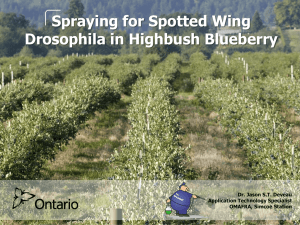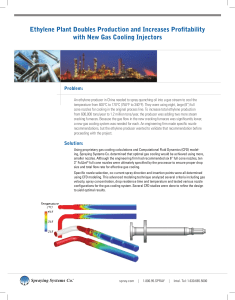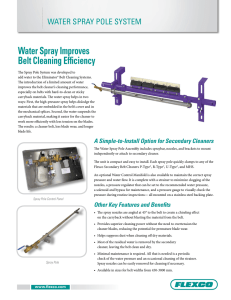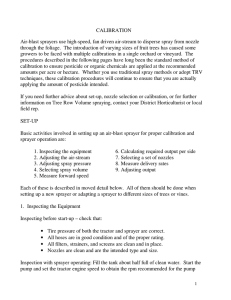Document 10904919
advertisement
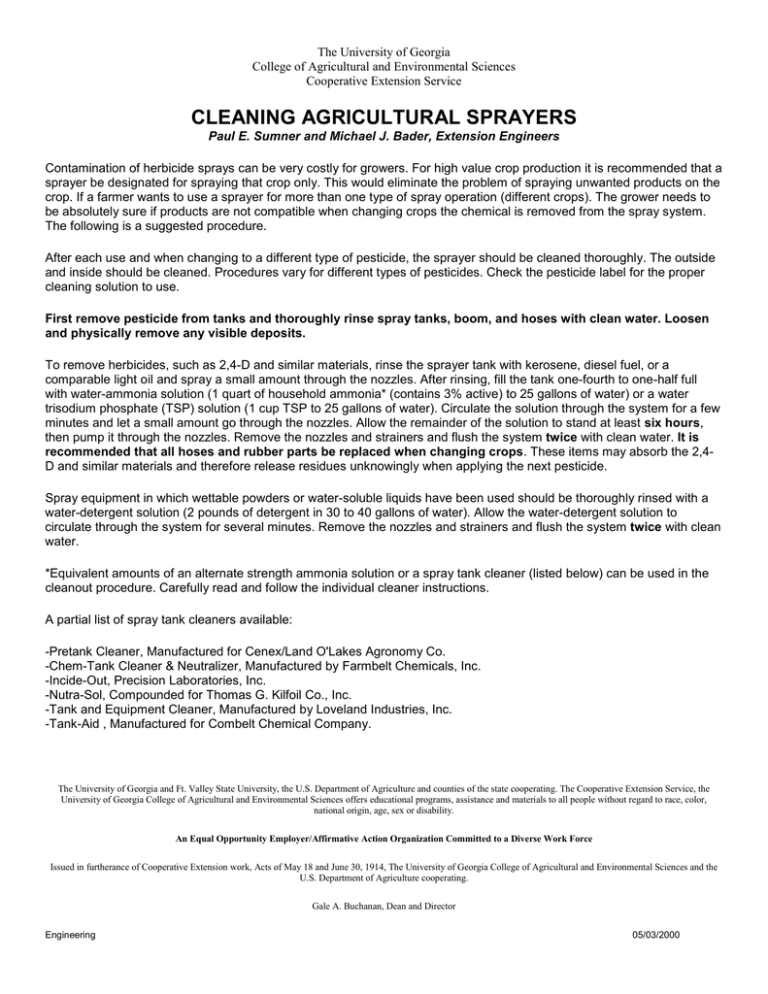
The University of Georgia College of Agricultural and Environmental Sciences Cooperative Extension Service CLEANING AGRICULTURAL SPRAYERS Paul E. Sumner and Michael J. Bader, Extension Engineers Contamination of herbicide sprays can be very costly for growers. For high value crop production it is recommended that a sprayer be designated for spraying that crop only. This would eliminate the problem of spraying unwanted products on the crop. If a farmer wants to use a sprayer for more than one type of spray operation (different crops). The grower needs to be absolutely sure if products are not compatible when changing crops the chemical is removed from the spray system. The following is a suggested procedure. After each use and when changing to a different type of pesticide, the sprayer should be cleaned thoroughly. The outside and inside should be cleaned. Procedures vary for different types of pesticides. Check the pesticide label for the proper cleaning solution to use. First remove pesticide from tanks and thoroughly rinse spray tanks, boom, and hoses with clean water. Loosen and physically remove any visible deposits. To remove herbicides, such as 2,4-D and similar materials, rinse the sprayer tank with kerosene, diesel fuel, or a comparable light oil and spray a small amount through the nozzles. After rinsing, fill the tank one-fourth to one-half full with water-ammonia solution (1 quart of household ammonia* (contains 3% active) to 25 gallons of water) or a water trisodium phosphate (TSP) solution (1 cup TSP to 25 gallons of water). Circulate the solution through the system for a few minutes and let a small amount go through the nozzles. Allow the remainder of the solution to stand at least six hours, then pump it through the nozzles. Remove the nozzles and strainers and flush the system twice with clean water. It is recommended that all hoses and rubber parts be replaced when changing crops. These items may absorb the 2,4D and similar materials and therefore release residues unknowingly when applying the next pesticide. Spray equipment in which wettable powders or water-soluble liquids have been used should be thoroughly rinsed with a water-detergent solution (2 pounds of detergent in 30 to 40 gallons of water). Allow the water-detergent solution to circulate through the system for several minutes. Remove the nozzles and strainers and flush the system twice with clean water. *Equivalent amounts of an alternate strength ammonia solution or a spray tank cleaner (listed below) can be used in the cleanout procedure. Carefully read and follow the individual cleaner instructions. A partial list of spray tank cleaners available: -Pretank Cleaner, Manufactured for Cenex/Land O'Lakes Agronomy Co. -Chem-Tank Cleaner & Neutralizer, Manufactured by Farmbelt Chemicals, Inc. -Incide-Out, Precision Laboratories, Inc. -Nutra-Sol, Compounded for Thomas G. Kilfoil Co., Inc. -Tank and Equipment Cleaner, Manufactured by Loveland Industries, Inc. -Tank-Aid , Manufactured for Combelt Chemical Company. The University of Georgia and Ft. Valley State University, the U.S. Department of Agriculture and counties of the state cooperating. The Cooperative Extension Service, the University of Georgia College of Agricultural and Environmental Sciences offers educational programs, assistance and materials to all people without regard to race, color, national origin, age, sex or disability. An Equal Opportunity Employer/Affirmative Action Organization Committed to a Diverse Work Force Issued in furtherance of Cooperative Extension work, Acts of May 18 and June 30, 1914, The University of Georgia College of Agricultural and Environmental Sciences and the U.S. Department of Agriculture cooperating. Gale A. Buchanan, Dean and Director Engineering 05/03/2000

